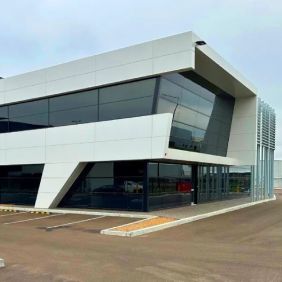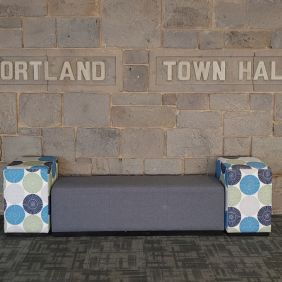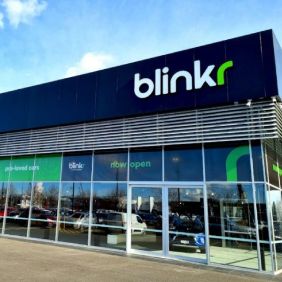There comes a time when you need to design your office layout. You have the option of choosing between the traditional and open office designs. While both have their pros and cons, it ultimately comes down to what best suits your business. Here’s a look at the two office designs and how they can impact your business:
Traditional Office Design
The traditional office design is typically characterized by rows of cubicles or offices, with common areas in the center. This type of design can be very efficient, as it allows employees to have their own space while still being able to collaborate in common areas. However, this type of design can also be limiting, as it can create a feeling of isolation and make it difficult to interact with other departments.
be very efficient, as it allows employees to have their own space while still being able to collaborate in common areas. However, this type of design can also be limiting, as it can create a feeling of isolation and make it difficult to interact with other departments.
Traditional Office Design Pros
Conventional office designs come with a number of known advantages. Some of the key ones include:
- Can be very efficient
- Allows for collaboration in common areas
- Enhances privacy and creates a sense of ownership
Traditional Office Design Cons
While traditional office designs have their advantages, there are also some potential drawbacks to consider. These can include:
- Can limit interaction with other departments
- Can create a feeling of isolation
- It does not offer much flexibility
Open Office Design
Open office design is becoming increasingly popular, as it offers a more collaborative environment. This type of office typically features an open floor plan, with fewer walls and more common areas. This can make it easier for employees to interact with each other and foster a more collaborative work environment. However, this type of design can also be distracting, as there are fewer barriers to noise and visual distractions.
Pros of Open Office Designs
Some of the benefits of open office design include:
- It can foster a more collaborative environment
- There are fewer barriers to visual and noise distractions
- It can be more flexible
Open Office Design Cons
While there are some advantages to open office design, there are also some potential drawbacks to consider. These can include:
- It can be distracting
- There is less privacy
- It can be less efficient
So, which office design is right for you? It ultimately depends on your business and what will work best for your employees. If you need help deciding, contact us today and we’ll be happy to assist you.
Main Differences between Traditional and Open Office Design
There are quite some glaring differences when you compare traditional and open office designs. Let us take a look at some of these key differences:
Privacy
The most notable difference is the amount of privacy each type of office provides. Traditional offices typically offer more privacy, as employees have their own cubicles or offices. This can be beneficial for employees who need to focus on their work and don’t want to be distracted by others. However, it can also make it difficult to collaborate with others, as there are more barriers between employees.
Open offices, on the other hand, provide less privacy, as they typically feature an open floor plan. This can make it easier for employees to interact with each other, but it can also be distracting and reduce the level of focus employees can give to their work.
Noise
Another key difference between traditional and open offices is the level of noise. Traditional offices typically have more barriers to sound, which can make it easier for employees to focus on their work. However, open offices typically have fewer barriers to sound, which can make it more difficult for employees to concentrate.
Visual Distractions
Finally, another key difference is the level of visual distractions. Traditional offices typically have more barriers to sight, which can make it easier for employees to focus on their work. However, open offices often have fewer barriers to sight, which can make it more difficult for employees to concentrate.
Factors to Consider When Choosing an Office Design
When choosing an office design, there are a few factors to consider, including:
Type of Business
You will need to keep in mind the specific type of business you are in when deciding on an office design. For example, if you are in a creative industry, then an open office design might be more beneficial, as it will encourage creativity and collaboration. However, if you are in a more traditional business, such as a law firm, then a traditional office design might be more appropriate, as it will provide the needed privacy
Office Furniture
Another factor to consider is your office furniture. If you have a lot of heavy or bulky furniture, then an open office design might not be ideal, as it can make the space feel cramped. However, if you have light and airy furniture, then an open office design can help to make the space feel more open and spacious.
Size of the Team
The size of your team will also play a role in deciding on an office design. If you have a large team, then an open office design might be the best option, as it can provide the necessary space for everyone to work. However, if you have a small team, then a traditional office design might be more appropriate, as it can provide the needed privacy.
Level of Collaboration Needed
You will need to consider the level of collaboration needed in your office. If you need a lot of collaboration, then an open office design might be the best option. However, if you don’t need as much collaboration, then a traditional office design might be more appropriate.
Budget
Finally, you will need to consider your budget when choosing an office design. Open office designs can often be more expensive than traditional designs, as they typically require more space. However, if you have a limited budget, then there are ways to create an open office design on a smaller scale, such as using cubicles or partitions.
Conclusion
By considering the factors listed above, you can make sure that you choose an office design that will work best for your business. As you have seen both traditional and open office designs have their pros and cons.









